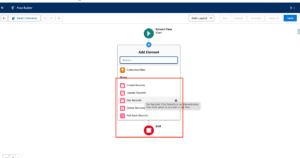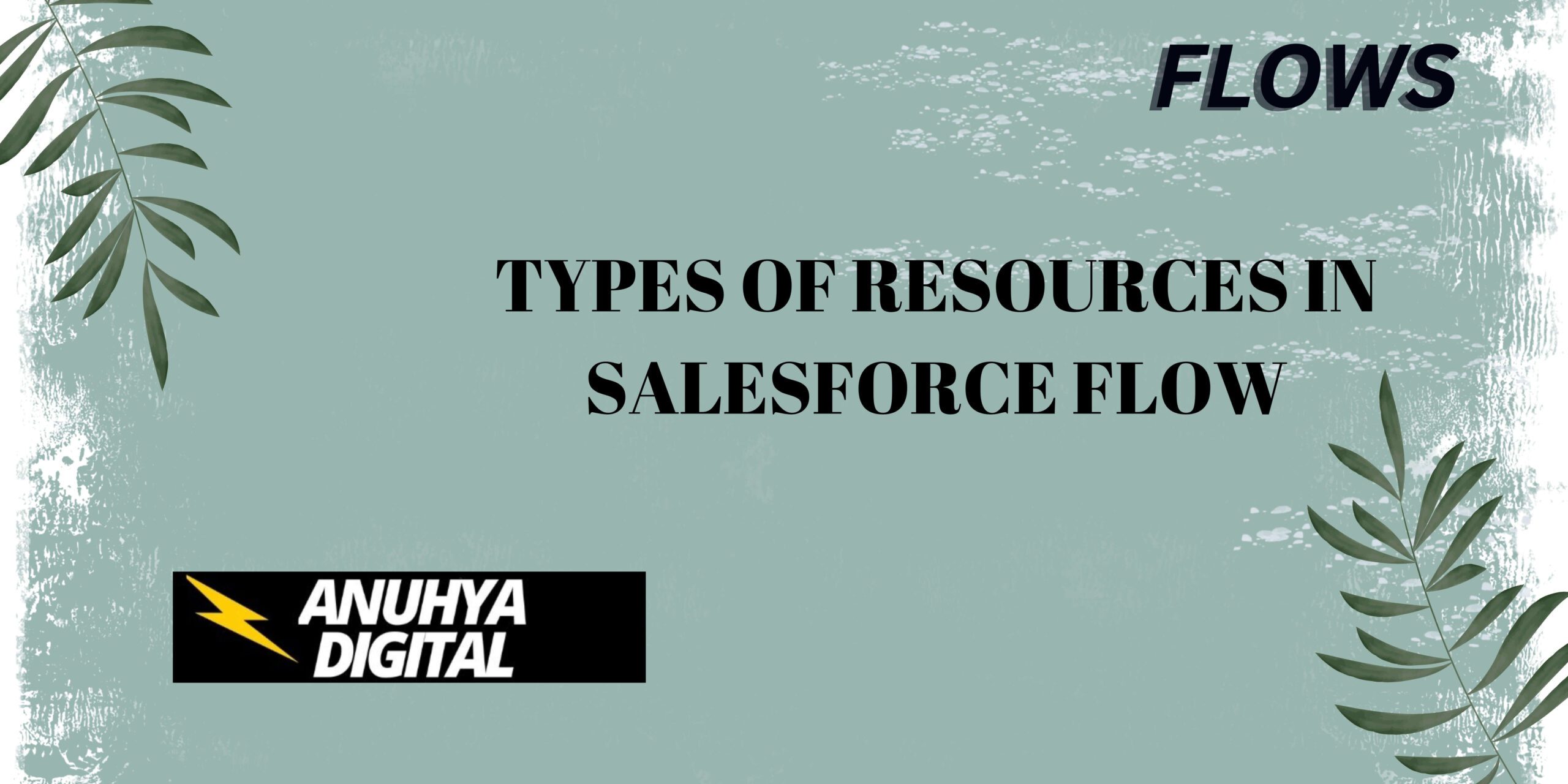In our previous blog post we had discussed about Types of Flows in Salesforce.In these blog post we discuss about Types of Resources in Salesforce Flow
Contents
Types of Resources in Salesforce Flow
Salesforce Flow is a powerful tool that allows users to automate business processes by building applications visually. To create effective flows, understanding the types of resources available is essential. Resources in Salesforce Flow act as building blocks that store data or perform specific functions within the flow. Here’s an overview of the main types of resources in Salesforce Flow.

Variables
Variables are used to store data that can change throughout the flow. They can hold various types of data, such as text, numbers, dates, and more. For example, a variable can store a user’s input or the result of a calculation.
Collections
Collections are a type of variable that can hold multiple values of the same type. They are useful when you need to store a list of records or multiple pieces of related data. For instance, a collection can hold a list of contact records retrieved from a Salesforce query.
Constants
Constants store fixed values that do not change during the flow execution. They are useful for storing values that are used repeatedly in the flow, such as a specific discount rate or a default value for a field.
Formulas
Formulas perform calculations or operations on other data within the flow. They can combine fields, perform arithmetic operations, or apply logical conditions. Formulas are useful for dynamically generating values based on other data in the flow.
Choices
Choices represent predefined options that users can select from in a screen element. They are used in picklists or radio buttons to present a set of options to the user. Choices help standardize user input and ensure data consistency.
Picklist Choice Sets
Picklist Choice Sets dynamically generate choices from a picklist field in Salesforce. They are useful when you need to present users with options directly from a Salesforce picklist, ensuring that the choices are always up-to-date.
Record Choice Sets
Record Choice Sets generate choices from a set of Salesforce records. They allow users to select a record from a list of options, such as choosing an account from a list of accounts. This resource is helpful for creating dynamic and data-driven user interfaces.
Stage Names
Stage Names are used in flows that involve multiple stages or steps, such as approval processes. They represent the different stages a record can be in and help control the flow’s progression through these stages.
Text Templates
Text Templates store formatted text that can be reused throughout the flow. They are helpful for creating consistent and standardized messages, such as email templates or confirmation messages.
Global Variables
Global Variables are predefined variables provided by Salesforce that store system information. Examples include the current user’s ID, the current record’s ID, and other contextual information. They help make flows more dynamic and context-aware.
Resources for Data Elements
Resources for Data Elements are used to interact with Salesforce records. They include:
- Get Records: Retrieves records from Salesforce based on specified criteria.
- Create Records: Creates new records in Salesforce.
- Update Records: Updates existing records in Salesforce.
- Delete Records: Deletes records from Salesforce.

Conclusion
Understanding and effectively utilizing these resources can significantly enhance the capabilities of your Salesforce Flows. By leveraging the appropriate resources, you can build more dynamic, efficient, and user-friendly flows that automate complex business processes and improve productivity.
We want to more about Types of Resources in Salesforce Flow Click Here
FAQs
What are Salesforce Flow Resources?
Salesforce Flow Resources are the building blocks of a flow. They store data, perform actions, and help the flow make decisions.
What do Variables do in Salesforce Flow?
Variables in Salesforce Flow hold data temporarily while the flow is running. They can store different types of information like text, numbers, or records. Variables are important for moving data between different parts of the flow, storing user inputs, or getting data from Salesforce objects
How are Collections different from Variables in Salesforce Flow?
Collections are like Variables but can hold multiple items of the same type, like a list of records or numbers.
What is a Formula Resource in Salesforce Flow?
A Formula Resource in Salesforce Flow is used to calculate values based on other data in the flow. It works like a formula in a spreadsheet, allowing you to do math, text operations, or logic. Formulas are useful for creating values that depend on other data.
In our next blog post we will discuss about What is Screen Flows In Salesforce

2 thoughts on “Types of Resources in Salesforce Flow”